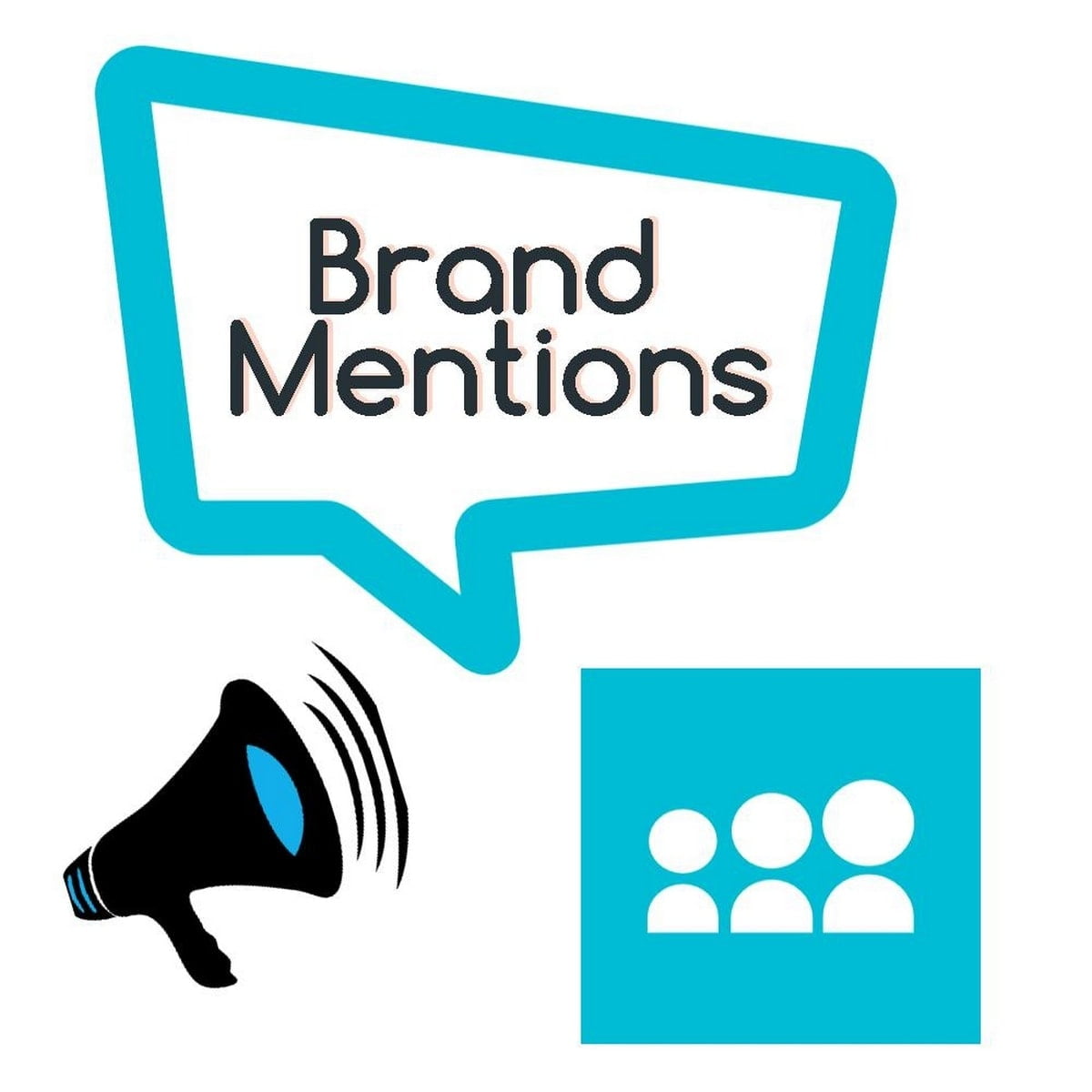15 Brand Monitoring Tips and Tools To Help Improve Your Brand Reputation
Why brand monitoring matters
Online brand monitoring is important for businesses because it provides insight into brand awareness and gauges the following:
- how consumers feel about the brand
- hears customer feedback
- identifies areas needing improvement
- understands marketing impacts
- gathers insight into the target audience
- identifies risks
By monitoring their brand and the competition, businesses can better understand their target audience’s needs, benchmark their performance, and identify strategic gaps.
Brand monitoring allows businesses to evolve their marketing plan and ensure their brand stays ahead of the competition, ultimately leading to better brand perception and successful strategies.
The best time of day to perform brand monitoring
One of the key questions regarding brand monitoring is determining the best time of day to perform the task. It’s important to monitor your brand constantly to be the first to react to any potential crisis.
However, since brand monitoring is time-consuming, it’s important to determine what time of day is the most effective.
To make the most out of brand monitoring, performing the task in the morning and throughout the day is best.
This is because most people are active online during these times, and thus online mentions about your brand are more likely to occur.
Furthermore, brand crises tend to spread quickly, so responding as soon as possible is important.
Additionally, monitoring your brand at different times of the day gives you an idea of the topics being discussed.
With the right brand monitoring tools and a good strategy, you can ensure that your brand reputation is well maintained.

What to watch for when monitoring your brand
Monitoring your brand is important to maintaining an edge over your competitors.
With brand monitoring, you can gain insight into the perception of your brand, understand what works for your competition, and spot strategic gaps.
There are many factors to consider when monitoring your brand, including where to look, what to look for, and what tools to use.
Knowing what to monitor is as important as knowing where to direct your focus.
To get the most out of your monitoring efforts, it’s essential to identify industry trends, analyze competitor performance, and understand influencers promoting them.
Tracking various metrics and using a media monitoring tool ensures your marketing strategy and communication are relevant and up-to-date.
Brand monitoring is an invaluable tool for marketers, allowing you to implement dynamic strategies and uphold the brand reputation.
1. Keywords
Keywords are words or phrases that define or describe a product or service.
They are important for monitoring a brand because they provide insight into how customers perceive the product or service.
When tracking mentions of a brand, it is important to consider the keywords associated with it.
This helps to gain an understanding of the conversations happening around it and to identify any spikes in popularity or visibility.
2. Social media platforms
Regarding brand monitoring, it’s important to monitor as many platforms as possible to stay aware of brand perception.
The key social channels businesses should consider monitoring are Twitter, Facebook, Instagram, influencers, forums, blogs, news, and review websites.
Utilizing a monitoring app like Brand24 can help businesses discover potential clients, compare their performance to their competitors, and join pertinent discussions in real-time to spread the word about their product, service, or content.
3. Brand mentions
Brand mention monitoring is keeping track of all mentions of a brand, product, or keyword across the internet and social media.
This is essential for brands to ensure they are visible and actively engaging with their customers and potential customers.
Through brand mention monitoring, brands can identify customer sentiment and better understand what people say about their products and services.
This can greatly benefit a brand’s reputation, allowing them to quickly respond to customer concerns or questions and identify opportunities to improve their brand.
Furthermore, brand monitoring can also be used to gain insights into the competition and spot trends in the industry.
By tracking mentions of their brand and competitors, brands can better understand the market and plan their strategies accordingly.
4. Conversations
Conversations are exchanging thoughts, ideas, and opinions between two or more people.
They are important in building relationships, understanding perspectives, and making decisions.
Conversations are a key way for brands to connect with customers, build relationships, and gain insights into their preferences and behaviors.
By monitoring conversations, brands can identify opportunities to engage with customers, address concerns, and engage in conversations that build trust and loyalty.

5. Open-ended questions
Here are some examples of open-ended questions that can be used to monitor a brand:
Examples with explanations may include:
- “What do you like most about this brand?”
- “What could this brand do to improve its services?”
- “What kind of features would you like to see from this brand?”
- “What do you think about the customer service offered by this brand?”
- “What are your biggest grievances with this brand?”
These open-ended questions can help brands gain insight into the public’s opinion of them, their services and products, and customer service.
These questions can be used to identify improvement areas and gain feedback on making their brand more appealing to their customers.
Additionally, these questions can help brands better understand how they are perceived in the market and what areas they should focus on to strengthen their reputation.
6. Sentiment analysis
Sentiment analysis can be a powerful tool in helping monitor your brand, as it helps to measure the public’s overall perception of your brand.
Through sentiment analysis, you can uncover the emotion behind each post and measure the overall sentiment of your brand.
This can give you understanding of how people feel about your brand, allowing you to shift the narrative to ensure your messaging is accurately conveyed to your audience.
Additionally, sentiment analysis can help you monitor and measure the performance of campaigns by allowing you to track the campaign’s reach and the sentiment of the responses.
As such, it can be invaluable in helping you monitor your brand.
7. Brand monitoring tools
When tracking and analyzing online mentions about your brand, numerous brand monitoring tools are available.
Here are just a few of the top 10 brand monitoring tools to take a look at:
- Brand24
- Google Alerts
- Brandwatch
- Hootsuite
- BuzzSumo
- Social Mention
- Native Social Networks and Analytics
- Ahrefs
- TweetDeck
- Keyhole
8. Monitoring trends
Monitoring trends can be a valuable tool for brands to stay ahead of the competition, improve customer experience, and measure the success of campaigns.
With brand monitoring, companies can identify opportunities for improvement and collaboration, detect and manage crises, and measure campaign success.
By tracking industry-specific terms and emerging trends, businesses can stay updated with their offerings and cross-reference their standing and relevance within their sector.
They can also compare their external brand perception to their internal idea of the brand personality, manage conflicts, and monitor the success of their competitors’ strategies.
Monitoring trends can also identify infringers and address competitor and consumer reactions. In this way, brands can protect themselves from unfair competition and foster trust in the brand.
Through brand monitoring, businesses can use the data to plan for success, adjust their marketing campaigns, and ensure their brand is growing in success.

9. Content marketing strategy
When monitoring your content marketing strategy, there are several factors to consider.
- You need to determine your goals and how you’ll measure success.
- You must identify the social media channels and other sources you want to monitor.
- You must find the right tools to help you track and analyze data.
- You need to know how to respond to customer requests and crises online.
- You must create an effective plan and strategy to reach your brand’s potential online.
All of these steps will help you measure and improve the effectiveness of your content marketing strategy.
10. Social media campaigns
Social media campaigns are marketing strategies for promoting a brand on social media platforms like Facebook, Twitter, and Instagram.
They involve creating content and engaging with the audience through conversations.
By monitoring social media campaigns, businesses can gain valuable insights into their customers, understand their needs and preferences, and spot potential opportunities and threats.
This can help them create better strategies to improve their brand’s visibility, engagement, and reputation.
Additionally, businesses can use these campaigns to identify trends in the market, build relationships with customers, and respond to criticism promptly.
Social media campaigns also allow businesses to monitor their competitors and gain valuable insights into their strategies.
Ultimately, social media campaigns effectively allow businesses to monitor their brand and gain a competitive edge in their industry.
15 brand monitoring tips for beginners
From understanding the basics of monitoring brands to discovering the best brand monitoring software for the job, you’ll be well on your way to a successful brand monitoring strategy.
We’ll also look at the practical uses of brand monitoring and how it can improve customer experience and measure campaign success.
So, let’s get started!
1. Monitor social media with social monitoring tools
Social monitoring tools can be extremely useful in helping to monitor brand performance.
By using a brand monitoring tool, businesses can track the positive and negative comments about their brand online and be able to react quickly to any issues that arise.
These tools allow businesses to track what people say about their products and services and the sentiment of those comments.
This information can then inform and improve marketing strategies and provide valuable insights into customer demographics, such as age, location, and language.
It also allows businesses to monitor their competitors’ performance, which can be used to inform and adjust their strategies.
With the help of brand monitoring tools, businesses can better understand their customer base and make informed decisions on improving their services.

2. Track brand mentions using social listening
Social listening is a powerful tool for tracking brand mentions.
It lets brands monitor real-time conversations about their company, products, and services on digital channels.
To get the most out of social listening, here are the steps to follow:
- Identify your keywords – Identify the keywords that best represent your brand. These words should be related to your business or products, including your brand name, product names, website URL, and industry terms.
- Set up monitoring tools – Next, set up monitoring tools to track conversations about your keywords. Popular tools include Brand24, Google Alerts, Brandwatch, Hootsuite, BuzzSumo, Social Mention, Native social networks, and analytics.
- Monitor your brand mentions – Use the tools to track brand mentions across different digital channels. This helps you keep tabs on what is being said about your brand and provides insights into customer sentiment.
- Analyze the data – Use the data collected to analyze your brand’s reach, identify opportunities for improvement, and understand how customers perceive your brand.
- Engage with customers – Reach out to customers and discuss your brand. This helps build relationships with customers and foster loyalty.
By tracking brand mentions and engaging with customers, you can build awareness and loyalty for your brand.
Social listening is an invaluable tool for companies to monitor and analyze customer sentiment and take the necessary steps to improve their brand presence.
3. Analyze data and create reports
Analyzing data and creating reports can greatly help beginners with brand monitoring.
By accessing metrics and insights on social media posts, conversations, and trends, beginners can better understand their target audience and competitive landscape.
With the right analysis tools, they can filter and analyze data from Twitter, Facebook, and Instagram to track the mentioned trends of industry keywords or products and identify spikes.
With a brand monitoring tool, they can measure their estimated reach, track referral traffic from mentions, and identify top-mentioning resources.
Additionally, combining creativity and analytics at each step of their workflow can help them to optimize their content and marketing strategy.
In this way, beginners can make the most out of their brand monitoring efforts and ensure their brand is growing in success.
4. Monitor the presence of your competitors
Monitoring your competitors’ presence is important to understand the competitive landscape and stay ahead.
By monitoring your competitors, you can identify emerging industry trends, spot opportunities to take over the conversations, learn from their mistakes and benefit from their errors.
You can also use competitor benchmarking to measure your share of voice and brand sentiment compared to your competitors.
Additionally, brand monitoring can help a company assess its strengths and weaknesses about its competitors.
Monitoring your competitors is a great way to stay informed and ensure your brand remains competitive.
5. Understand what your audience is saying
Understanding what your audience is saying can help you with brand monitoring by the following:
- surfacing user-generated content (UGC) from brand-loyal advocates and fans that can be shared on your channels
- nurturing a greater sense of community
- monitoring conversations and mentions proactively
- understanding sentiment from the press
- recognizing trends in conversation
It will also allow you to keep tabs on customer feedback, complaints, or praise and uncover the sentiment behind each post and your brand overall.
By actively listening to what your audience is saying, you can use this information to shift the narrative around your brand and ensure your marketing makes people feel how you want them to.

6. Identify trends and patterns in conversation
Brand monitoring can be greatly facilitated by identifying trends and patterns in conversations.
This helps identify spikes in mentions of industry keywords or products, compare trends between the brand and its competitors, and pinpoint important conversations.
It also helps to detect sentiment through text parsing and natural language detection from multiple sources to gain a comprehensive overview of sentiment toward the brand.
This allows brands to monitor conversations and mentions proactively and even discover UGC from brand-loyal advocates and fans.
7. Use hashtags to track specific topics
Hashtags are a great way to track specific topics related to your business or industry.
You can use them to monitor conversations, identify trends and spikes, and measure your brand’s reach.
Here’s how to use hashtags for brand monitoring:
- Choose the right hashtags: First, choose keywords or phrases related to your brand or industry. You can also create custom hashtags to promote your products or services.
- Use social media management tools like Hootsuite or Mentionlytics to track conversations using your chosen hashtags. This will help you see posts or content that use your brand name, plus variations or misspellings.
- Analyze results: Once you have the conversations, use tools like SEMRush or Hootsuite Insights powered by Brandwatch to analyze the results. Check the sentiment and the share of mentions to ensure your brand reputation grows.
- Spread the word: Use your hashtag to engage with customers and prospects in real-time. Respond quickly to comments or queries and use social media to promote your product or service.
Using hashtags to track specific topics, you can monitor conversations, identify trends and spikes, and measure your brand’s reach.
With the right tools, you can keep up with what people say about your brand in real time and use that knowledge to grow your business.
8. Track conversations around new products or services
Tracking conversations around new products or services can be a valuable tool for beginners with brand monitoring.
By actively listening to customer feedback, companies can gain valuable insights into product development, identify potential customers, and nurture relationships with existing customers.
Through monitoring conversations and mentions, companies can identify any issues with their overall business performance, like a shipping company that is not delivering orders on time.
This can be done by setting up a search stream for the brand name or hashtag on Hootsuite.
Additionally, by responding to customer feedback, companies can build meaningful relationships with their customers and show them that their opinion matters.
This can positively impact the company’s reputation and increase brand loyalty and purchases.
9. Pay attention to customer feedback
By paying attention to customer feedback through brand monitoring, businesses can learn valuable insights into their brand reputation and customer experience.
This can help businesses better understand how customers perceive specific aspects of their business, such as product quality and customer service, and provide them with ways to actively market their products, such as sharing positive reviews.
Additionally, customers can provide helpful ideas for product development and identify issues with overall business performance.
As a result, businesses can use this information to improve customer service, build meaningful relationships with customers, and potentially increase their customer spending.
10. Track brand image with sentiment analysis
Sentiment analysis is a valuable tool for tracking brand image, providing insights into how people feel about a brand.
By uncovering the sentiment behind each post and looking at how brand sentiment changes over time, businesses can better understand how their campaigns affect their brand image.
This data can help organizations identify positive and negative trends and take steps to ensure that their brand is seen positively.
Additionally, sudden sentiment changes can indicate a potential PR crisis and prompt companies to take action.
By using sentiment analysis, businesses can ensure that their marketing efforts successfully create the desired image for their brand.
11. Use social media to listen and respond
Social media can listen and respond to brands in several ways.
- Brands should actively monitor social channels and influencers to identify customer feedback, complaints, and praise. This helps brands stay updated with their audiences and identify opportunities to engage and grow their brand.
- Brands can use social listening to monitor the conversations happening around their product, competitors, and more. This helps them identify potential customers looking for solutions and be the first to answer their questions and offer solutions, allowing them to convert prospects into leads.
- Social media can create a two-way conversation between businesses and customers.
Brands should engage with customers on social channels in a relevant way, responding to their questions and addressing their concerns to build trust and a positive relationship.
For example, Wendy’s has perfected the art of witty replies on Twitter, and Netflix consistently follows and responds to conversations about its shows.
Monitoring social channels also allows brands to gain insight into customer sentiment, identify potential crises, and proactively address the situation.
By engaging in conversations on social media and responding to customers, brands can ensure they deliver the best customer experience possible.
12. Integrate tools to monitor all platforms
Integrating tools to monitor all platforms is important to comprehensively understand your brand’s public perception.
By monitoring all platforms, you can find out what social media platforms and websites your target audience uses and better understand your brand’s strengths and weaknesses.
Moreover, this allows you to safeguard your brand reputation against potential PR crises, find marketing opportunities and discover influencers you can collaborate with.
You can achieve all this and more with the right brand monitoring tools, so choosing the right one for your business is important.
13. Set up alerts to capture unintentional mentions
Setting up alerts can help brands capture unintentional mentions by alerting them to any mention of their product or brand name.
This can allow them to quickly identify any potential customer service issues or negative reviews of their products and address them before they cause any substantial damage to their reputation.
Alerts can also help brands identify and respond to positive reviews or customer feedback, strengthening relationships with customers and building customer loyalty.
Alerts can also help brands find potential opportunities for collaboration or partnerships with other businesses, allowing them to expand their customer base and reach.
14. Explore options for enterprise brand monitoring
Enterprises can benefit greatly from using a brand monitoring tool to stay informed about their brand’s online conversations and perceptions.
Such tools can help beginners by providing them with the following:
- insights into the effectiveness of their branding efforts
- helping them identify and address potential infringers
- enabling them to react to the competitor and consumer reactions quickly
This can ultimately help them to establish and maintain their brand reputation while also enabling them to take proactive steps to ensure their brand remains competitive.
Furthermore, brand monitoring tools are designed to be user-friendly, allowing beginners to get up and running quickly.
15. Practice, practice, practice
Brand monitoring is essential for any business looking to build or maintain a strong brand presence.
For beginners, it is especially important to engage in brand monitoring to gain a better understanding of their customers, their industry, and the competition.
By monitoring key channels and areas such as the following:
- print media
- online publications and blogs
- social media platforms
- review sites
- broadcast media
Beginners can accurately understand how customers, journalists, and other stakeholders perceive their brand.
This can be invaluable when creating effective marketing plans, responding to customer feedback, and creating a positive brand sentiment.
Additionally, beginners can quickly establish a strong presence and grow their brand awareness by engaging in social customer service and effective social media marketing.
Finally, creating easy-to-understand social media reports can be key to showing the value of their social media efforts, backed up by data.
In short, for any business, especially beginners, engaging in brand monitoring is essential for success.





